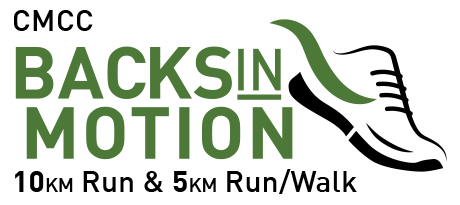Each time i’ve stuck to my outdoor running schedule. I’m not convinced that it’s particularly admirable or superhuman – but I know that not everyone readily takes to winter running.Here are a few reflections if you’re going to brave the tundra and go winter running:
1. All dressed up with nowhere to go – What you choose to wear while winter running will determine [a] how you feel afterwards and [b] if you ever try it again. Too much/too heavy gear will prove to be more work than its worth, plus it will bump up your perceived and actual effort potentially creating temperature and perspiration issues. The best recommendation is to multilayer – thin polyester (NOT COTTON!!! – unless you like a soaking wet next-to-body chafing feel) base layer, a thermal layer and a wind/water resistant outer layer. You can always remove layers as necessary. I managed to get through the winter with long sleeve polyester tops, a Nike Dri-Fit running jacket and a reflective outer vest, while sporting spandex compression tights and running pants with windproof nylon front leg panels.Also pay close attention to your extremities – on regular occasions I am tucking my fingers into my armpits to try to revive them from post-excruciating pain lifelessness. While I often joke about how runs get better once you can’t feel anything, you may want to double-mitt or double-sock.2. Water you talkin’ ’bout, Willis? – It’s easy not to pay attention to hydration while running in the snow or arctic temperatures, but exercise in these conditions bring with it all the risks of dehydration – particularly because you may not be aware of just how the cold, dry air is drawing moisture out of you skin, and/or the heightened perspiration that can accompany multiple layers of clothing. So fluids on your winter runs is recommended – just carry it close to your body (maybe underneath a layer or two) so that you don’t wind up lugging along a popsicle in a bottle.
3. I spy with my little eye – Visibility is often an important issue during the winter for various reasons: falling/blowing snow interferes with overall clarity, or you might choose (as I do) to run on the roads because sidewalks are not clear/safe, and morning runners (again, me) do not have the benefit of daylight to aid with visual acuity. A couple of quick helpers here are to [a] always wear bright and/or highly reflective clothing – the more conspicuous against a white backdrop the better; and [b] if you’re on the road run against traffic – goodness knows that drivers pay little attention to anything else occupying the road, and with potential traction issues you may as well be able to eyeball drivers as they’re approaching you and have enough advance notice to jump out of the way if necessary.4. The laws of a-traction – As noted above, sometimes the road is the safest place for you to run because of how dry (or at least ice-free) it may be. But if you run trails, or want to stick to sidewalks, you may choose to use some traction-assistive devices to your footwear. You don’t need to transfer your golf cleats onto your road shoes, but you may choose to avail yourself of something like Sure Foot’s Due North Traction Aid, or the Yaktrax Run (my choice).
5. Insane in the membrane – Finally … why? What exactly would possess someone to run in bone-chilling, frost-biting, ice-blasting, traction-reducing, sidewalk-avoiding conditions when you could run a program on your treadmill? Let me share just a few that keep me rolling out of bed before the sun comes up: [a] A training plan: I’m not the kind of guy who loves to run – i’m motivated by a goal, in this case qualifying for the Boston Marathon. even though i’ve only been running since 2010, I’ve come as close as 3 minutes from making the BQ grade. If you have a goal race that forces you to run through the winter, that is a huge motivator. [b] Character building: Yeah, on those days that it’s tough to be out there – because no one else is, or cars are honking at you, or the sleep was too short and the day before too strenuous – I feel like I’m going to look back on these winter runs as helping me through those “I should just give up” moments during the race. If I can make it through the elements of a Canadian winter, ain’t nothing going to stop me over the 42.195k.
[c] Core and stability development: It can be really uneven out there during the winter. I remember running one morning with my friend Trevor in snow so deep that he couldn’t get his car out of the driveway to meet up at our starting point. Having to lift your legs up to waist level just to propel yourself one step forward has got to be building some kind of strength in your core. Add to that the days (like yesterday) where running in an inch or two of soft, wet snow was like trudging through the mud, and other days where the snow landscape is more like frozen tundra forcing you to adjust to a shorter, quicker stride – it all presses you to pay attention to technique and refine the machine.
[d] Pride: Now that doesn’t sound right. It’s not pride that causes me to turn off the clock radio and lumber into the washroom with running gear in hand. Pride doesn’t get me out the door – but i always return with a sense of pride (maybe better put, accomplishment) when it seems that everyone else is just rousing from sleep and I can toss my perspiration-laden running gear into the laundry pile having just completed a speedwork run or 10k @ marathon pace. It’s sick, I’m sure, but in my head I often think “and what have you done with your day so far?”
[e] Stories that live on in personal running lore: All I can say is that my buddy Mike and I still chuckle about the day that we were out running and passed by police cars that had shut down a road because of downed trees and powerlines from the winter storm that morning.
I know – I’m not right in the head. But that’s my love-hate-love affair with winter running, and I hope that in some small way I might have inspired you to the same point of madness. Winter runners, unite!





















